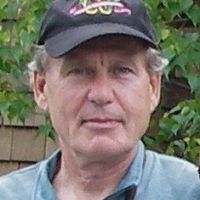Frizano et al., 2002
Soil phosphorus fractionation during forest development on landslide scars in the Luquillo Mountains, Puerto Rico
Frizano, F., Johnson, A.H., Vann, D.R., Scatena, F.N. (2002)
Biotropica
-
Luquillo, INVESTIGATOR
Abstract
Mineral soils from a chronosequence of landslide scars ranging in age from 1 to more than 55 years in a subtropical montane rain forest of eastern Puerto Rico were used to determine the rate at which labile P capital recovers during primary succession. Nine organic and inorganic soil P fractions were measured using the Hedley sequential extraction procedure. Deep soil cores (9 m) from a nearby site were also analyzed to determine the distribution of P fractions below the solum. Litterfall P was measured for two years in the landslide scars to estimate allochthonous litter P inputs, and published precipitation data were used to estimate annual atmospheric inputs of P to the recovering forests. In the upper solum (0–10 cm), organic matter increased with landslide age, as did resin-Pi, labile P (defined here as resin-Pi 1 HCO3–Pi 1 HCO3–Po) and total organic P. Occluded P decreased with increasing landslide age. No significant changes in P concentrations or pools were observed in 10 to 35 or in 35 to 60 cm depth intervals across the chronosequence. Labile soil P increased to approximately two-thirds of the pre-disturbance levels in the oldest landslide scar (.55 yr). Thus, plants, their associated microflora/fauna, and P inputs from off-site substantially altered the distribution of soil P fractions during forest recovery. Across the chronosequence, the increase in labile P accumulated in soil and biomass appeared to be greater than the estimated allochthonous inputs from litter and precipitation, indicating that as the forest developed, some occluded P may have been released for use by soil biota. Resin-Pi and labile P were correlated with soil organic matter content, suggesting, as in other highly weathered soils, organic matter accumulation and turnover are important in maintaining labile P pools. Primary mineral P (apatite) was scarce, even in deep soil cores.
Citation
Frizano, F., Johnson, A.H., Vann, D.R., Scatena, F.N. (2002): Soil phosphorus fractionation during forest development on landslide scars in the Luquillo Mountains, Puerto Rico. Biotropica.
Explore Further

